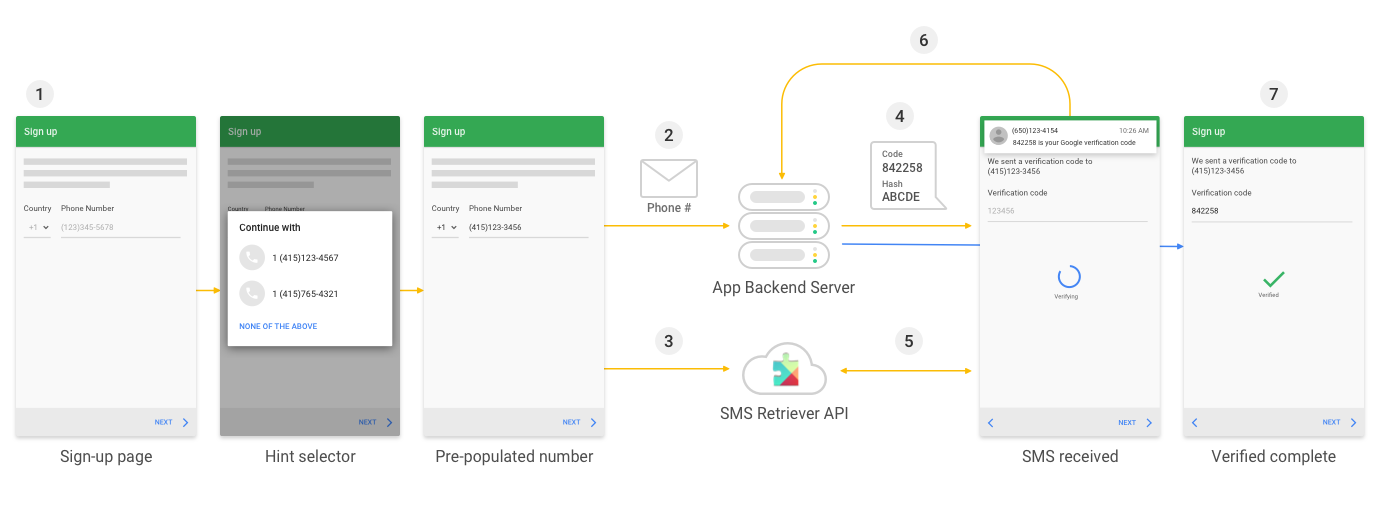Con l'API SMS Fetcher, puoi eseguire la verifica utente basata su SMS nella tua app Android automaticamente, senza che l'utente debba digitare manualmente i codici di verifica e senza richiedere autorizzazioni app aggiuntive. Quando implementi la verifica automatica via SMS nell'app, il flusso di verifica ha il seguente aspetto:
- Un utente avvia la verifica tramite SMS nell'app. L'app potrebbe richiedere all'utente di fornire un numero di telefono o utilizzare il selettore di suggerimenti Smart Lock per password se l'informazione non era necessaria per creare l'account.
- La tua app invia una richiesta al tuo server per verificare il numero di telefono dell'utente. A seconda delle informazioni disponibili nel tuo database utente, questa richiesta potrebbe includere l'ID utente, il numero di telefono dell'utente o entrambi.
- Allo stesso tempo, la tua app chiama l'API SMS Fetcher per iniziare ad ascoltare una risposta SMS dal tuo server.
- Il server invia all'utente un messaggio SMS che include un codice monouso da inviare nuovamente al server e un hash che identifica la tua app.
- Quando il dispositivo dell'utente riceve il messaggio SMS, Google Play Services utilizza l'hash dell'app per determinare se il messaggio è destinato alla tua app e mette a disposizione il testo del messaggio all'app tramite l'API SMS Fetchr.
- L'app analizza il codice monouso dal testo del messaggio e lo invia al tuo server.
- Il server riceve il codice monouso dalla tua app, lo verifica e infine registra che l'utente ha verificato il proprio account.
Per implementare la verifica automatica degli SMS nell'app, consulta le guide per Android e per i server:

